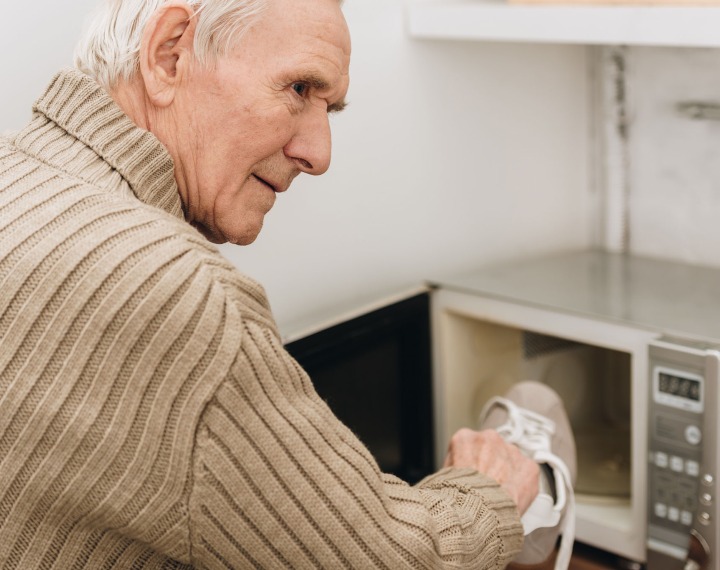Understanding Dementia & Providing Care: Part 2
 Dementia is a key consideration when it comes to providing high-quality care in many care environments, which is why understanding this condition and providing the very best levels of care is so essential. To help you to do that, we've put together our three-part guide to understanding dementia and providing the best levels of care possible. Following on from part one of our three-part dementia series, here's part two.
Dementia is a key consideration when it comes to providing high-quality care in many care environments, which is why understanding this condition and providing the very best levels of care is so essential. To help you to do that, we've put together our three-part guide to understanding dementia and providing the best levels of care possible. Following on from part one of our three-part dementia series, here's part two.
Part 2:
Handling Troubling Behavior
Some of the greatest challenges of caring for a loved one with dementia are the personality and behavior changes that often occur. You can best meet these challenges by using creativity, flexibility, patience, and compassion. It also helps to not take things personally and maintain your sense of humor.
To start, consider these ground rules:
- We cannot change the person. The person you are caring for has a brain disorder that shapes who he has become. When you try to control or change his behavior, you’ll most likely be unsuccessful or be met with resistance. It’s important to:
- Try to accommodate the behavior, not control the behavior. For example, if the person insists on sleeping on the floor, place a mattress on the floor to make him more comfortable.
- Remember that we can change our behavior or the physical environment. Changing our own behavior will often result in a change in our loved one’s behavior.
- Check with the doctor first. Behavioral problems may have an underlying medical reason: perhaps the person is in pain or experiencing an adverse side effect from medications. In some cases, like incontinence or hallucinations, there may be some medication or treatment that can assist in managing the problem.
Behavior has a purpose. People with dementia typically cannot tell us what they want or need. They might do something, like take all the clothes out of the closet on a daily basis, and we wonder why. It is very likely that the person is fulfilling a need to be busy and productive. Always consider what need the person might be trying to meet with their behavior—and, when possible, try to accommodate them.
Behavior is triggered. It is important to understand that all behavior is triggered—it occurs for a reason. It might be something a person did or said that triggered a behavior, or it could be a change in the physical environment. The root to changing behavior is disrupting the patterns that we create. Try a different approach, or try a different consequence.
What works today, may not tomorrow. The multiple factors that influence troubling behaviors, and the natural progression of the disease process, mean that solutions that are effective today may need to be modified tomorrow—or may no longer work at all. The key to managing difficult behaviors is being creative and flexible in your strategies to address a given issue.
Get support from others. You are not alone—there are many others caring for someone with dementia. Expect that, like the loved one you are caring for, you will have good days and bad days. Develop strategies for coping with the bad days.
The following is an overview of the most common dementia-associated behaviors, with suggestions that may be useful in handling them. You’ll find additional resources listed at the end of this fact sheet.
Wandering
People with dementia walk seemingly aimlessly, for a variety of reasons, such as boredom, medication side effects, or to look for “something” or someone. They also may be trying to fulfill a physical need—thirst, hunger, a need to use the toilet, or exercise. Discovering the triggers for wandering are not always easy, but they can provide insights to dealing with the behavior.
Make time for regular exercise to minimize restlessness.
Consider installing new locks that require a key. Position locks high or low on the door; many people with dementia will not think to look beyond eye level. Keep in mind fire and safety concerns for all family members; the lock(s) must be accessible to others and not take more than a few seconds to open.
Try a barrier like a curtain or colored streamer to mask the door. A “stop” sign or “do not enter” sign also may help.
Place a black mat or paint a black space on your front porch; this may appear to be an impassable hole to the person with dementia.
Add “child-safe” plastic covers to doorknobs.
Consider installing a home security system or monitoring system designed to keep watch over someone with dementia. Also available are new digital devices that can be worn like a watch or clipped on a belt that use global positioning systems (GPS) or other technology to track a person’s whereabouts or locate him if he wanders off.
Put away essential items such as the confused person’s coat, purse, or glasses. Some individuals will not go out without certain articles.
Have your relative wear an ID bracelet and sew ID labels in their clothes. Always have a current photo available should you need to report your loved one missing. Consider leaving a copy on file at the police department or registering the person with the Alzheimer’s Association Safe Return program or other emergency tracking service.
Tell neighbors about your relative’s wandering behavior, and make sure they have your phone number.
Incontinence
The loss of bladder or bowel control often occurs as dementia progresses. Sometimes accidents result from environmental factors; for example, someone can’t remember where the bathroom is located or can’t get to it in time. If an accident occurs, your understanding and reassurance will help the person maintain dignity and minimize embarrassment.
Establish a routine for using the toilet. Try reminding the person or assisting her to the bathroom every two hours.
Schedule fluid intake to ensure the confused person does not become dehydrated. Know that some drinks (coffee, tea, cola, or beer) have more of a diuretic effect than others. Limit fluid intake in the evening before bedtime.
Use signs (with illustrations) to indicate which door leads to the bathroom.
A commode can be left in the bedroom at night for easy access.
Incontinence pads and products can be purchased. A urologist may be able to prescribe a special product or treatment.
Use easy-to-remove clothing with elastic waistbands or velcro closures, and provide clothes that are easily washable.
For our final installment of this series, check back soon!





